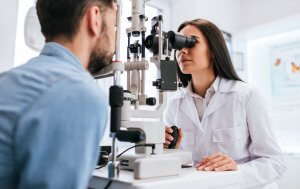What is Strabismus? And what do I need to know?

Voted Best of Berks—
eight years in a row!

With strabismus, the eyes are not aligned correctly. One eye looks at the target while the other eye can be turned inwards (esotropia), outwards (exotropia), or upwards (hypertropia). Misalignment of the eyes may occasionally be a sign of serious underlying ocular or neurologic problems. Strabismus is best treated in early childhood to have the best chance of developing normal binocular vision. Esotropia is often associated with visual loss caused by amblyopia, which also must be treated in order to have the best possible visual development.
The treatment of strabismus depends on the patient’s type of strabismus and must be tailored to the individual child. Treatments include glasses, eye exercises, and eye muscle surgery. During strabismus surgery, the muscles that move the eyes are weakened or strengthened in order to align the eyes properly. Treatment of strabismus can greatly improve a patient’s appearance and binocular vision.
Find a Doctor
Physician information including education, training, practice location and more.
Schedule an Appointment
Call 800-762-7132 or make an appointment online.





